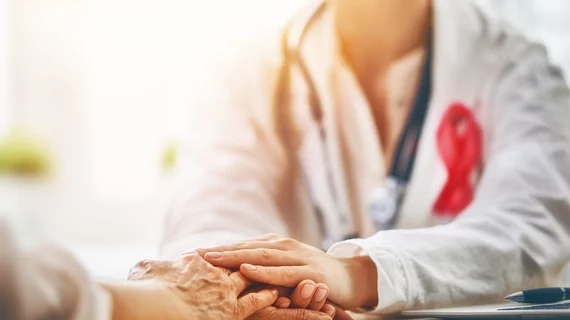Large study finds widespread variability in timeliness of follow-up services after an abnormal screening mammogram
A new large-scale analysis has uncovered widespread variability in the rates and timeliness of patients undergoing biopsies or diagnostic evaluation after an abnormal mammogram.
Across nearly 2.9 million women screened for breast cancer between 2008 to 2021, imaging providers documented follow-up care in about 66% of cases. Even lower rates were found for young (59%), Black (57%) or American Indian women (60%), researchers detailed Sept. 15 in JACR [1].
The findings, derived from the American College of Radiology’s National Mammography Database, offer important clues as leaders seek to improve follow-up rates after screenings.
“Understanding national trends in the rates and timeliness of diagnostic resolution of screen detected abnormalities can be useful for setting national benchmarks and guidelines,” Eniola T. Oluyemi, MD, with the Department of Radiology at Johns Hopkins, and colleagues wrote Friday. “However, as with all data derived from national registries, caution must be advised when interpreting overall follow-up rates as some patients might have received care at locations not submitting data to the NMD.”
For the analysis, researchers retrospectively pinpointed patients with results categorized as Breast Imaging Reporting and Data System category 0 (more testing needed). The search turned up a total of 2,874,310 mammograms reported as abnormal. Women with no family history of breast cancer also recorded lower rates of follow up at 63%. Across the study population, the overall median time to diagnostic evaluation was about nine days. But Oluyemi et al. discovered longer gaps for Black (14 days), other/mixed race (14 days) and Hispanic (13 days) women.
Out of nearly 319,000 recalled screening mammograms recommended for biopsy, only about 75% were documented as completed. The study unearthed lower biopsy rates for those over 80 (72%), along with Black (72%) and American Indian (52%) women. Patients experienced an overall median time from evaluation to biopsy of about three weeks, which was again longer for older (23 days), Black (25), mixed/other race (26) and Hispanic (23) women. The authors also highlighted longer delays based on where individuals were treated, including at rural (24 days) or community hospital-affiliated (22 days) facilities.
“The facility-level variations in the rates of diagnostic resolution highlight the impact that facility characteristics can have on the likelihood of follow-up,” the study noted. “Specifically, facilities with the lowest annual exam volumes were associated with lower rates of both diagnostic evaluation and biopsy completion. This could be largely due to these facilities not offering diagnostic and biopsy services or having processes in place to ensure follow-up.”
Read more in the Journal of the American College of Radiology at the link below.

